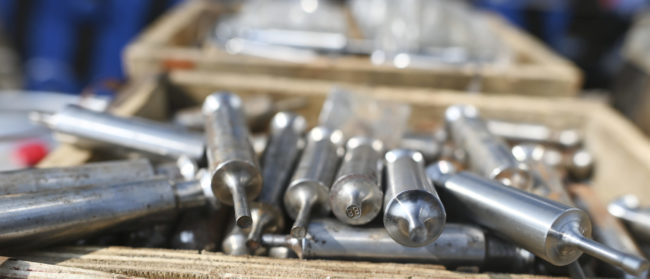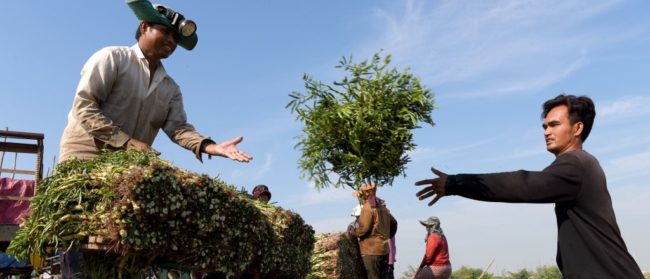As a kid, Danilo C. Dequiña’s diet in the southern Philippines featured a now-unusual seafood dish – sunny side up marine turtle eggs.
But in 2003, when Dequiña was working for local government planting mangrove seedlings, he learned that sea turtles were in danger of extinction. That was when he started the hobby of translocating eggs that might once have ended up on his breakfast plate to a vacant lot next to his house. Since then, the Maitum-area resident Dequiña has become the caretaker of Sarangani province’s first marine turtle hatchery.
Now, along his wife, Ria Dequiña, he transfers collected eggs into the reserve’s protected hatcheries with the help of a network of youth volunteers across the province to support conservation and make Sarangani a safer place for sea turtles.
“If we will not protect the sea turtles, who will?” he told the Globe this week.
But the battle picked by turtle conservationists around the world is not all smooth sailing, and many of them now face growing threats to the species they’re trying to save. If it takes a village to raise a child, as the old adage goes, so too does it take the cooperation of an entire community to save one turtle.
Today, in the context of the ongoing global pandemic that has slowed life just enough to allow many of these species the much needed breathing room to repopulate, that community effort has taken a whole new meaning.
Six of the seven sea turtle species recognised around the world are found in Southeast Asian waters, making the region a hotspot for gentle giants like the hawksbill, olive ridley and leatherback turtle, the last of which can grow as large as 2.2m across and weigh 680kg.
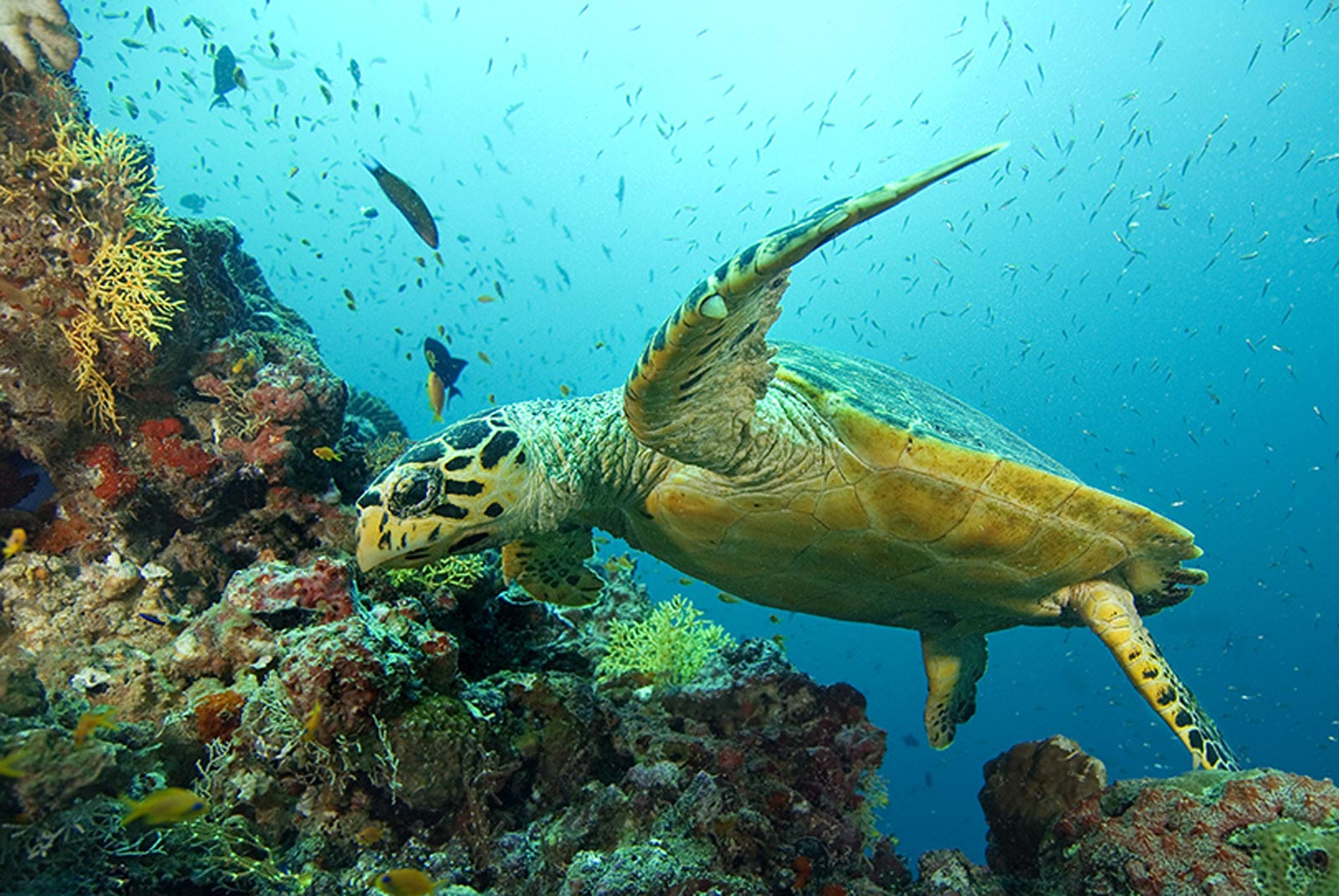
Young turtles face an upstream challenge before they even hit the ocean waters. Defenseless hatchlings are easy pickings for predators like sea eagles, lizards, ghost crabs and dogs, and their first scramble to the sea can be a fatal gauntlet run. Once they’ve made it to the water, young turtles drift with the currents before returning to coastal shores to nest when they reach the reproductive age range of 7-40 years, depending on species, or when they grow until their shell is about as large as a dinner plate – provided, of course, they don’t end up on one first.
Turtle meat and eggs are a delicacy in some Southeast Asian countries, with especially high demand in Malaysia and the Philippines. Their shells can also be fashioned into decorations, fuelling the illegal turtle trade and popularity with egg poachers.
“They have been collecting these eggs for decades and eating them, it’s become like a tradition. It’s hard to change human behaviour,” said Chen Pelf Nyok, co-founder of Turtle Conservation Society of Malaysia (TCS). Besides sea turtles, Chen added, freshwater turtles in Malaysia are also threatened by local egg poaching.
During the ongoing pandemic, social media channels and online shopping platforms like Shopee have been used as mediums for turtle egg transactions in Terengganu state, Malaysia. Reports show that more turtles have been nesting on Malaysia’s empty beaches as people stay home due to the Movement Control Order (MCO).
Kartik Shanker, faculty at the Indian Institute of Science in Bangalore and co-founder of Dakshin Foundation, has worked on sea turtle research for over 30 years. He shares his doubts and concerns about the effects of lockdown measures.
“I’ve seen these reports from different parts of the world, but it’s unlikely”, he said of lockdown procedures helping turtles. “If at all, turtles may come from nearby beaches and nest in places that are otherwise crowded. But once the people come back or the lights return, the hatchlings won’t survive. So it may actually be worse for them.”
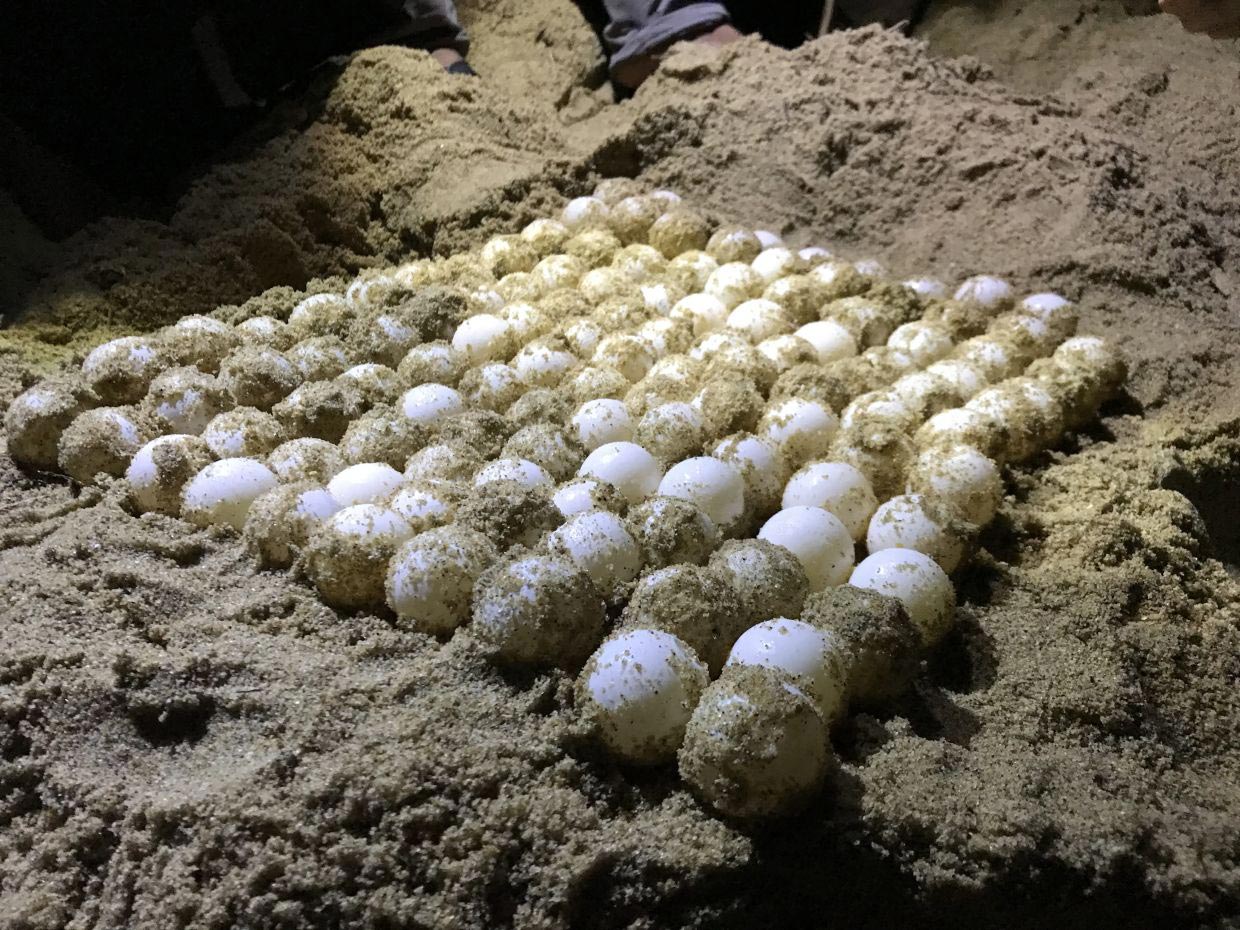
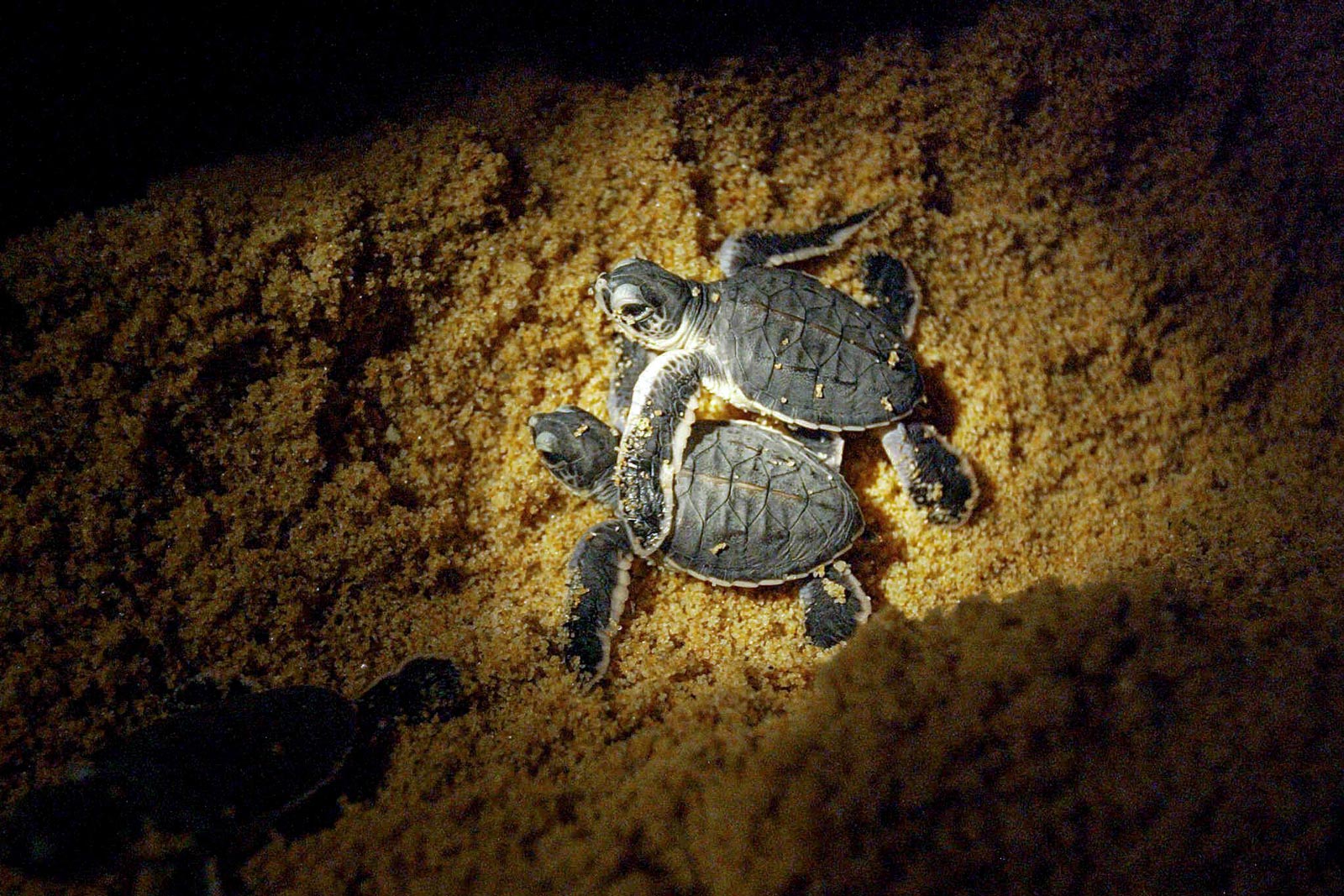
I look forward to the day when all sea turtle eggs in the country are given the protection that they need
Chen Pelf Nyok
Chen says other threats to turtles in Malaysia include “habitat alteration or destruction due to sand dredging and dams”, explaining these activities change the riverbanks where the species would usually lay their eggs.
Shanker says a big part of the decline of sea turtle numbers in the late 20th century is due to coastal development that disrupts nesting beaches. He also pointed to the toll of incidental catches, when anglers looking for fish snare turtles “mostly in trawl fisheries, but also the long lines and gill nets all over the world”.
As a result of this destructive bycatch, Shanker added, populations of some of the world’s largest species of turtle have been decimated.
“One of the major leatherback nesting rookeries in Asia, in Malaysia, completely declined and disappeared by the late 90s,” Shanker said.
However, the tide seems to have turned for the better in many parts of the world. Just recently in Terengganu, Malaysia, authorities have called for the ban of all turtle egg trades by the end of 2020. The state has been a major nesting site for turtles, but also a hotspot for their poachers.
“I look forward to the day when all sea turtle eggs in the country are given the protection that they need”, Chen said. “Otherwise, that just makes sea turtle conservation efforts even tougher.”
For some populations, it turned out that the small amount of protection that was given to them was enough for them to start rebounding. Odisha, a major nesting rookery for olive ridley turtles on the east coast of India, is evidence of this.
“The population in Orissa [Odisha] today is stable or increasing; and there is a small but new mass nesting site in the Andaman Islands. Leatherback turtles at our index beach in Little Andaman Island also seem to be doing well,” Shanker said, adding that the increased presence of other conservation groups along the coast of India has led to the decline of poaching of eggs in the region.
A village to raise a child, a community to save a turtle
Danilo C. Dequiña is not the first to have had a change of heart, or appetite.
The Pawikan Conservation Center in Philippines is being managed by the Bantay Pawikan, a community-based organisation where former egg poachers now protect and conserve the marine turtles.
The initiatives of Bantay Pawikan, which is chaired by Manolo Ibias, was a life-changing decision, not only for themselves, nor for their families, but for the community as well.
“Learning about the real situation of the marine turtles being endangered species with only a 1% survival rate changed their hearts,” says Danica Lolita C. Tigas and team from Bataan Tourism, who work closely with Ibias and his team. “They realised that the harm and negative impact on the marine ecosystem caused by poaching outweighs the income they derived if they continue to do so.”
The reach of conservationists’ efforts would not be as extensive and effective without the help of local communities.
Chen, who was also fondly referred to as Mek Tuntung – ’turtle lady’ in Terengganu dialect – in her community, appreciates the assistance from local villagers in her own terrapin conservation efforts.
“The local villagers go to the riverbanks where they wait for these terrapins to lay eggs, which they collect and bring back to the hatchery for conservation instead of collecting them to sell.”
The lockdown measures implemented by Malaysia recently in March has also further shown the importance of support from the grassroots.
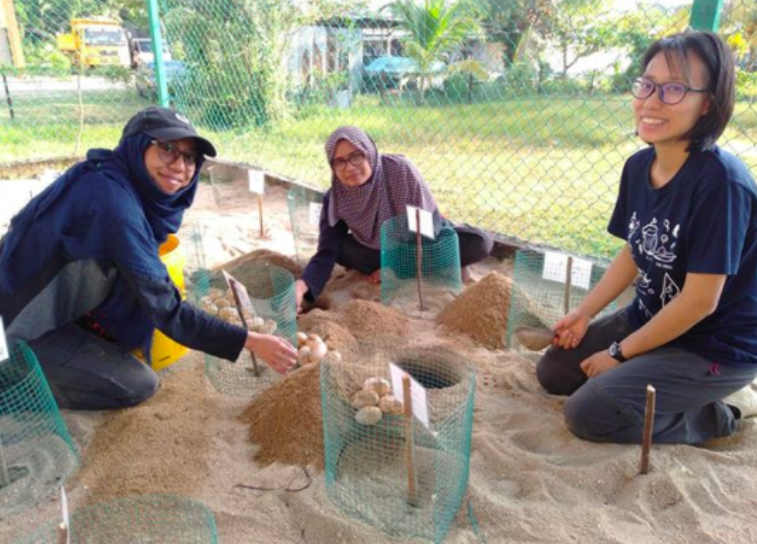
“Now that there’s the lockdown, I cannot go to the village because it’s more than 10 kilometres away from where I stay. But I’m thankful that the local villagers near the hatchery are still able to check in and care for them every day,” she says.
In the quaint town of Maitum, Sarangani in southern Philippines, Dequiña’s hobby of relocating turtle eggs from his daily diet to his nearby vacant lots caught on with his neighbours, who began to refrain from collecting these eggs for consumption themselves. PaWeCan Do It, the nonprofit conservatory that he works closely with, told the Globe about Dequiña’s commitment to educate young people in his community about the wonder of marine turtles, gradually gaining traction. It is only with the help of their collective efforts that as of 2016, almost 15,000 eggs were released with an impressive hatching success rate of 85.35%.
They spend most of their life at sea so you don’t know what they do over there. They’re like this complete mystery. But then these prehistoric reptiles show up on the beach under the cover of darkness and give us a ringside view of a critical part of their lives – nesting
Kartik Shanker
“After all, biodiversity conservation is an inter-generational responsibility and we hope people acknowledge that. I would say that conservation is not only about dealing with wildlife but also about dealing mostly with people’s behaviour,” says Kier Mitchel E. Pitogo, co-founder of PaWeCan Do It.
Ecotourism as a double-edged sword
Ecotourism, or sustainable tourism, has risen to the fore as an additional kit in the conservation toolbox, be it through volunteer programs, buying hatchlings to release them instead of for consumption purposes and conservatories doubling up as tourist attractions.
Bataan Tourism, the organisation that runs the Pawikan Conservation Centre is a case in point. On top of rescuing injured turtles – which they refer to as Pawikans – and initiatives to stop egg poaching, the PCC team carried out an initiative allowing tourists to adopt and release their own hatchlings for a small fee, in part to raise awareness and using the profits to keep their conservation efforts sustainable.
Referring to ecotourism as a means to turtle conservation ends, Chen says that as a conservation organisation, they are not supposed to promote the monetary exchange of wildlife. However, she also acknowledges that there could be benefits in doing so, especially when assessing the alternative.
“Even if I don’t buy these eggs, [the poachers] will still collect them. They will either eat these eggs or they will sell it to their neighbours or the external market.”
But Shanker was more hesitant in fully subscribing to the idea of ecotourism as a silver bullet solution, citing how unreliable tourism can be especially given recent global developments.
“As the COVID crisis has shown us, tourism is sort of a fickle friend. The communities that depended on revenue streams from nature and tourism are now suffering,” he said.
Shanker also cited other potential side effects from tourism, such as carbon emissions. “Additionally, people forget that many aspects of tourism have other environmental impacts, for example when people were flying in from all over the world to see these turtles, or any wildlife for that matter.”
When asked what got him on his conservation journey in the first place and what has changed over the course of 30 years, Shanker muses fondly on his first midnight turtle walks by the beach as a student.
“You know, they spend most of their life at sea so you don’t know what they do over there. They’re like this complete mystery. But then these prehistoric reptiles show up on the beach under the cover of darkness and give us a ringside view of a critical part of their lives – nesting.”
“But I like to keep reminding people that as attractive these turtles are, we shouldn’t lose the focus of the bigger picture, which is the ocean, and not just the turtles. We must think about the conservation of the ecosystem as a whole.”

